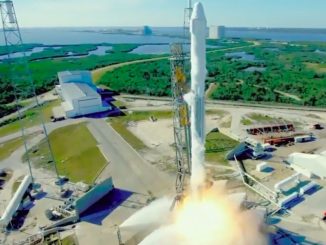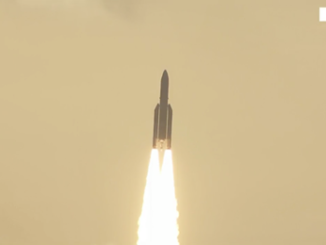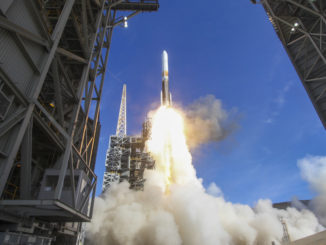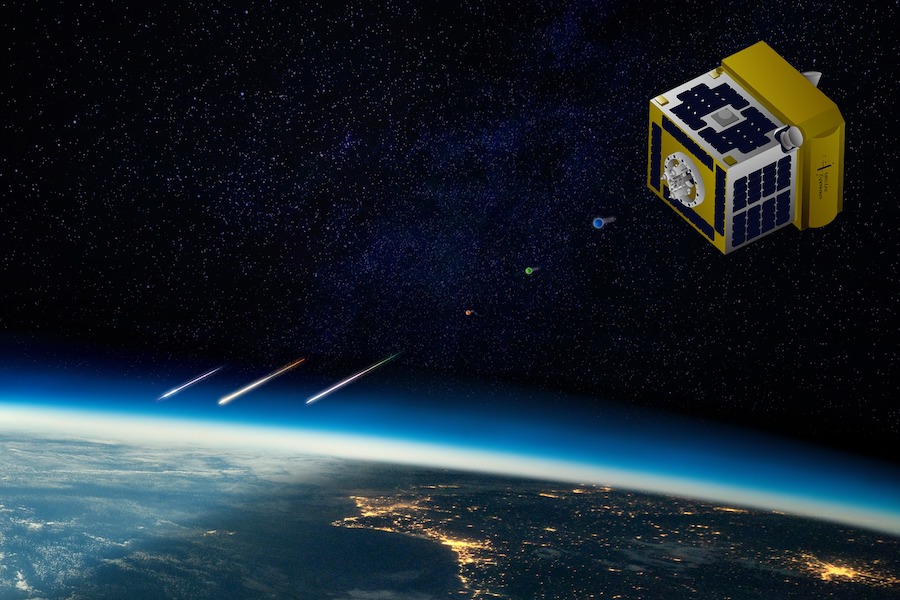
A small Japanese satellite scheduled for launch Friday on a Rocket Lab Electron booster will release hundreds of colorful sky pellets to fall into the atmosphere next year, creating an artificial meteor shower that could be visible to millions.
The satellite, built and owned by Tokyo-based Astro Live Experiences, will launch into a 250-mile-high (400-kilometer) polar orbit to prepare for next year’s sky spectacle. On-board thrusters will help target re-entry over a specific region for the artificial shooting stars.
ALE has not announced the location or exact time for the meteor shower demonstration.
“I’m excited for the upcoming launch of our second satellite, ALE-2,” said Lena Okajima, ALE’s chief executive. “I’m delighted to have an earlier launch date than I expected. With this launch, we are a step closer to realize the man-made shooting star.”
The 165-pound (75-kilogram) ALE-2 satellite measures 2 feet by 2 feet by 2.6 feet (60 x 60 x 80 centimeters). It’s the biggest of seven spacecraft scheduled for launch on Rocket Lab’s 10th Electron rocket Friday
The launch window opens at 2:56 a.m. EST (0756 GMT) Friday at Rocket Lab’s privately-run launch base on New Zealand’s North Island. Liftoff time is set for 8:56 p.m. local time in New Zealand.
The launch of the ALE-2 satellite follows the deployment of ALE’s first microsatellite earlier this year during a flight of a Japanese Epsilon rocket.
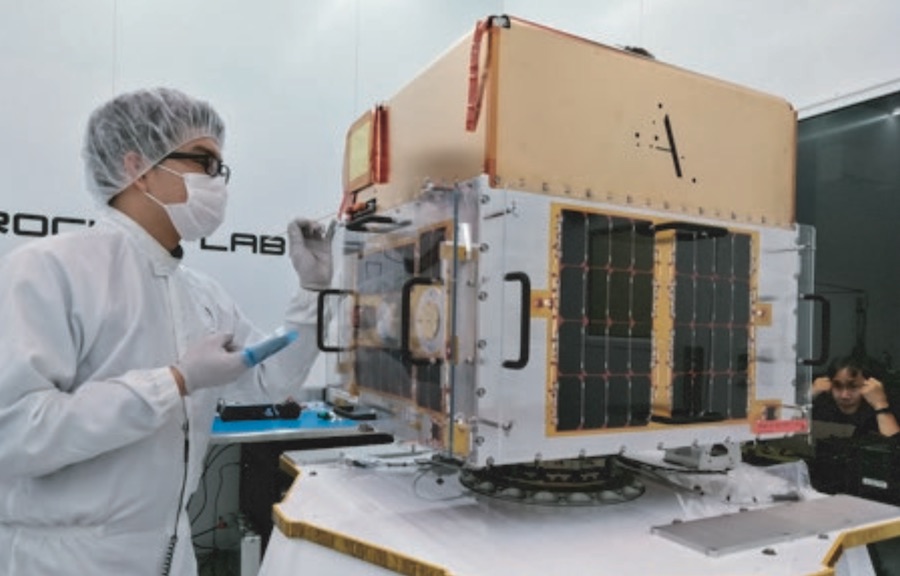
ALE said the initial operations of the ALE-1 satellite became “prolonged,” and the company decided to prioritize technology verification and the flight experience with the first satellite before lowering its orbit and jettisoning numerous pea-sized pellets to burn up in the atmosphere.
The pellets on the ALE-1 satellite were designed to burn in four colors — white, green, pink and orange — and the ALE-2 satellite adds blue as a fifth color for the artificial shooting stars. The particles will fully burn up in the atmosphere, according to ALE.
The artificial shooting star satellites are part of ALE’s “Sky Canvas” project. The company says tracking the re-entry of the shooting star particles will help scientists predict the path of satellites and other objects as they fall into the atmosphere, and could also contribute to meteorological and climate research.
Spaceflight, a Seattle-based company, procured launch capacity on Rocket Lab’s Electron rocket for the ALE-2 spacecraft.
“Our experience offering end-to-end launch services across multiple launch vehicles continues to be highly valued by organizations — regardless if they’re a newer customer like ALE, or an experienced constellation developer,” said Curt Blake, CEO and president of Spaceflight. “Our expertise and long-standing relationships provide reliability, flexibility, and the confidence that we’ll get customers to space as efficiently as possible. We’re really looking forward to taking ALE on our third Electron launch this year.”
Spaceflight has flown customer missions on two previous Rocket Lab missions this year, one in June and another in August.
The ALE-2 satellite and six other tiny payloads on Rocket Lab’s Electron rocket will deploy into a 250-mile-high orbit. Officials have downplayed concerns about space debris from the artificial meteor shower because the spacecraft will fly below the orbit of the International Space Station, and atmospheric drag will naturally bring the objects back to Earth.
The other six satellites aboard the Electron rocket are 2-inch (5-centimeter) PocketQube picosatellites from the Scottish satellite manufacturer and mission management provider Alba Orbital.
Alba Orbital arranged the launch of all six PocketQubes, which are smaller and cheaper than most CubeSats, for customers in the United States, Spain and Hungary.
Two of the PocketQubes were built by Alba Orbital for Stara Space, a Miami Beach startup, as a proof-of-concept for an eventual constellation of tiny satellites to provide high-speed data connection, storage and computation. The NOOR 1A and 1B satellites each weigh less than 2 pounds and carries equipment to demonstrate inter-satellite data links, encrypted communications, and an active pointing system, according to Alba Orbital.
Alba is handling launch services for four other PocketQubes.
“This will be the biggest deployment of PocketQubes in history, with the goal to provide a regular service for the PocketQube community, servicing startups such as Stara, universities and space agencies,” Alba said in a statement.
The first four PocketQubes launched in 2013. Alba says it is arranging the launch of another cluster of PocketQubes after the six tiny satellites launching Friday.
Here’s how Rocket Lab describes the other four PocketQubes on Friday’s launch:
- ATL-1: A payload from Advanced Technology of Laser (ATL) from Hungary designed to test a new thermal isolation material in space, conduct a thermal insulator material experiment, and DVB-T band spectrum monitoring.
- Fossasat-1: FossaSat 1 is a picosatellite developed by Spanish non-profit organization Fossa Systems. The spacecraft, which fits in the palm of a hand, is a communications satellite that uses low power RF to provide IOT connectivity.
- SMOG-P: A novel spectrum monitoring payload built by students at the Budapest University of Technology and Economics in Hungary. Smog-P features a spectrum analyzer to measure man-made electromagnetic pollution from space.
- TRSI Sat: ACME AtronOmatic is a US-Germany based software application development company that provides flight tracking services to the aviation community and to mobile applications such as MyRadar, a weather radar application for mobile devices.
Email the author.
Follow Stephen Clark on Twitter: @StephenClark1.

